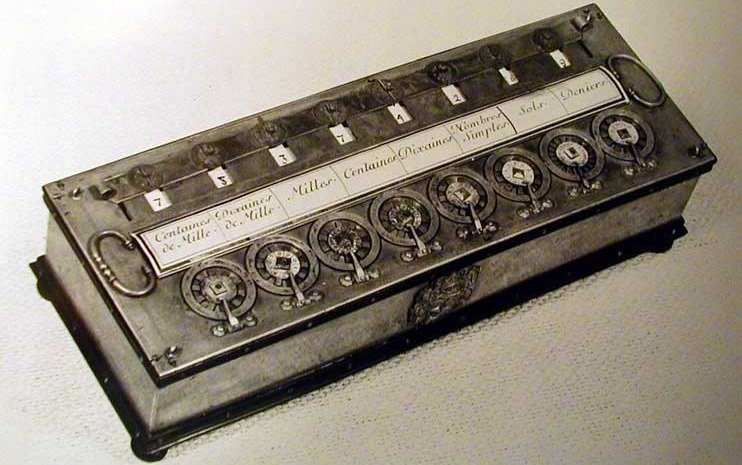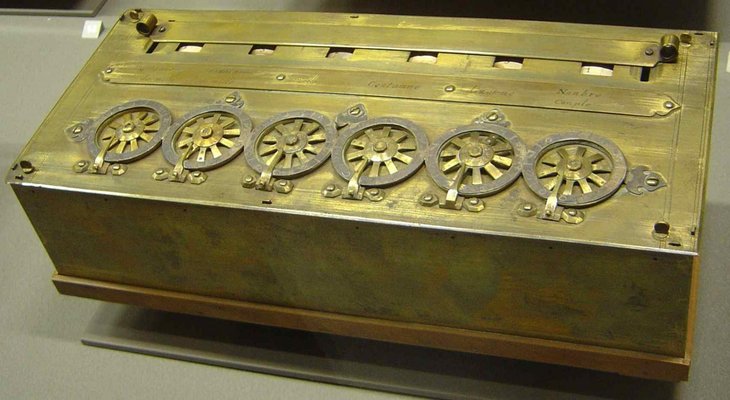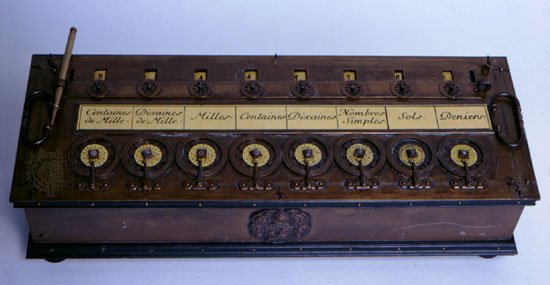The World's First Mechanical Calculator Was Invented By Mathematician Pascal
Dhir Acharya - Jan 13, 2020

The machine is called Pascal's calculator, the Pascaline, or the Arithmetique. Originally, it could handle 5 digits but was then upgraded to 6 and 8 digits.
- 15 Examples Of Maths Patterns In Nature That Will Stun You (Part 1)
- Indian Kid Broke 4 World Records In Maths After Surviving Severe Head Injury
- Shakuntala Devi Awarded Guinness World Records’ Fastest Human Computation Certificate After 40 Years
Blaise Pascal was the most celebrated physicist and mathematician as well as a religious philosopher in France. He worked on projective geometry and conic sections, he laid the grounds for the theory of probability. In 1642, when Pascal was 18 years old, he invented and built the world’s first digital calculator to help his father, who was working as a tax collector, with tedious tax accounting.

The device was dubbed Pascal’s calculator, or the Arithmetique, or the Pascaline. Pascal continued to improve his design over the next several years and built a total of 50 Pascaline machines.
The first Pascaline could handle 5-digit numbers only, but Pascal then developed 6 and 8-digit versions of this machine.
The calculator consisted of metal wheel dials that people could turn to the specific numbers with a stylus, and the answer would appear in the boxes in the top of the machine. In terms of the look, the Pascaline was a box made of brass that measured 3.5 mm in length, 125 mm in width, and 75 mm in thickness. The calculator was compact enough for portability. On top of the machine, there was a row of eight dials that were movable, displaying numbers from 0 to 9. That meant people can add up to eight figures in a column.

There was also a right-hand dial representing deniers, another one representing sous, and there was a remainder for France’s currency at the time, livres. The machines could also handle pounds, shilling, and pence.
The Pascaline supported Maths calculations including addition, subtraction, multiplication, and division. It was difficult to conduct division and multiplication, by repeated subtraction and repeated addition, respectively. For instance, to conduct the 1234 x 567 calculation, we would have to register 1234 for 7 times using the dial on the right, then register 1234 for 6 times using the next dial, and enter 1234 for 5 times with the next dial. Then we need to pull the handle and the machine would provide the answer. The same techniques are applied in modern computers.

However, the design had some issues due to the French currency back then. A livre had 20 sols and a sol had 12 deniers. This system was maintained in France till 1799 but a system in Britain that had similar multiples remained till 1971. The technical problems were much harder to solve so that the machine could work with this division of the livre into 240 compared with 100.

Pascal tried to put the Pascaline into production to earn profit Though it didn’t turn out successful, it resulted in many units of the machine remaining to this day. The difference between them is that their accumulators have different numbers of digits and there are small differences in their internal mechanisms too. The models that survived until today don’t function well. And the machines are quite delicate, which may give erroneous results if users aren’t careful with them. For instance, some of them produce extra carrys in certain digits in the accumulator if they are knocked or bumped even just a little.
>>> After Rejection From The US, India Made Its Own Supercomputer, And All Thanks To This Man
Featured Stories

Features - Jul 01, 2025
What Are The Fastest Passenger Vehicles Ever Created?

Features - Jun 25, 2025
Japan Hydrogen Breakthrough: Scientists Crack the Clean Energy Code with...

ICT News - Jun 25, 2025
AI Intimidation Tactics: CEOs Turn Flawed Technology Into Employee Fear Machine

Review - Jun 25, 2025
Windows 11 Problems: Is Microsoft's "Best" OS Actually Getting Worse?

Features - Jun 22, 2025
Telegram Founder Pavel Durov Plans to Split $14 Billion Fortune Among 106 Children

ICT News - Jun 22, 2025
Neuralink Telepathy Chip Enables Quadriplegic Rob Greiner to Control Games with...

Features - Jun 21, 2025
This Over $100 Bottle Has Nothing But Fresh Air Inside

Features - Jun 18, 2025
Best Mobile VPN Apps for Gaming 2025: Complete Guide

Features - Jun 18, 2025
A Math Formula Tells Us How Long Everything Will Live

Features - Jun 16, 2025
Comments
Sort by Newest | Popular